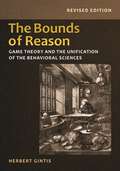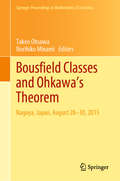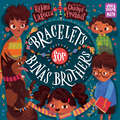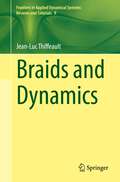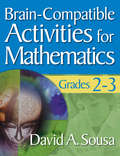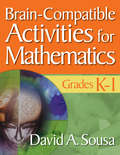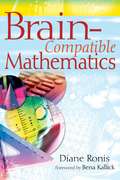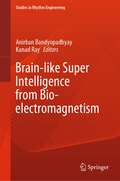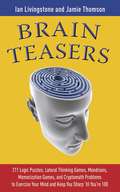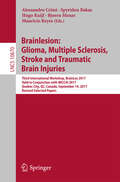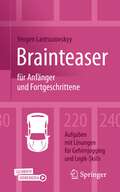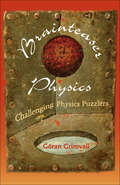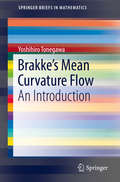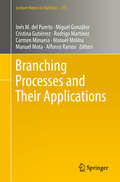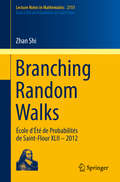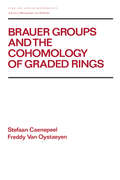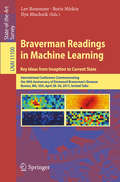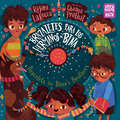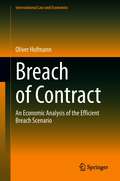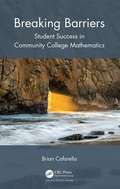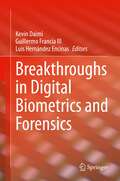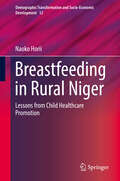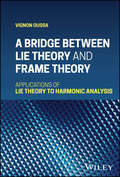- Table View
- List View
The Bounds of Reason: Game Theory and the Unification of the Behavioral Sciences - Revised Edition
by Herbert GintisGame theory is central to understanding human behavior and relevant to all of the behavioral sciences—from biology and economics, to anthropology and political science. However, as The Bounds of Reason demonstrates, game theory alone cannot fully explain human behavior and should instead complement other key concepts championed by the behavioral disciplines. Herbert Gintis shows that just as game theory without broader social theory is merely technical bravado, so social theory without game theory is a handicapped enterprise. This edition has been thoroughly revised and updated.Reinvigorating game theory, The Bounds of Reason offers innovative thinking for the behavioral sciences.
Bousfield Classes and Ohkawa's Theorem: Nagoya, Japan, August 28-30, 2015 (Springer Proceedings in Mathematics & Statistics #309)
by Takeo Ohsawa Norihiko MinamiThis volume originated in the workshop held at Nagoya University, August 28–30, 2015, focusing on the surprising and mysterious Ohkawa's theorem: the Bousfield classes in the stable homotopy category SH form a set. An inspiring, extensive mathematical story can be narrated starting with Ohkawa's theorem, evolving naturally with a chain of motivational questions: Ohkawa's theorem states that the Bousfield classes of the stable homotopy category SH surprisingly forms a set, which is still very mysterious. Are there any toy models where analogous Bousfield classes form a set with a clear meaning?The fundamental theorem of Hopkins, Neeman, Thomason, and others states that the analogue of the Bousfield classes in the derived category of quasi-coherent sheaves Dqc(X) form a set with a clear algebro-geometric description. However, Hopkins was actually motivated not by Ohkawa's theorem but by his own theorem with Smith in the triangulated subcategory SHc, consisting of compact objects in SH. Now the following questions naturally occur: (1) Having theorems of Ohkawa and Hopkins-Smith in SH, are there analogues for the Morel-Voevodsky A1-stable homotopy category SH(k), which subsumes SH when k is a subfield of C?, (2) Was it not natural for Hopkins to have considered Dqc(X)c instead of Dqc(X)? However, whereas there is a conceptually simple algebro-geometrical interpretation Dqc(X)c = Dperf(X), it is its close relative Dbcoh(X) that traditionally, ever since Oka and Cartan, has been intensively studied because of its rich geometric and physical information.This book contains developments for the rest of the story and much more, including the chromatics homotopy theory, which the Hopkins–Smith theorem is based upon, and applications of Lurie's higher algebra, all by distinguished contributors.
Bracelets for Bina's Brothers (Storytelling Math)
by Rajani LaRoccaCelebrate diversity, math, and the power of storytelling!For the Hindu holiday of Raksha Bandhan, Bina is determined to make beaded bracelets for her brothers all by herself. She finds out which colors her brothers like and dislike and sets to work. Working with her every-other-one beading pattern causes Bina to discover something new about patterns--and her brothers.Storytelling Math celebrates children using math in their daily adventures as they play, build, and discover the world around them. Joyful stories and hands-on activities make it easy for kids and their grown-ups to explore everyday math together. Developed in collaboration with math experts at STEM education nonprofit TERC, under a grant from the Heising-Simons Foundation.
Braids and Dynamics (Frontiers in Applied Dynamical Systems: Reviews and Tutorials #9)
by Jean-Luc ThiffeaultThis monograph uses braids to explore dynamics on surfaces, with an eye towards applications to mixing in fluids. The text uses the particular example of taffy pulling devices to represent pseudo-Anosov maps in practice. In addition, its final chapters also briefly discuss current applications in the emerging field of analyzing braids created from trajectory data. While written with beginning graduate students, advanced undergraduates, or practicing applied mathematicians in mind, the book is also suitable for pure mathematicians seeking real-world examples. Readers can benefit from some knowledge of homotopy and homology groups, but these concepts are briefly reviewed. Some familiarity with Matlab is also helpful for the computational examples.
Brain-Compatible Activities for Mathematics, Grades 2-3
by Dr David A. SousaAligned with NCTM standards and focal points, this resource offers ready-to-use lessons that include brain-compatible math activities, step-by-step instructions for the teacher, and all the necessary reproducibles.
Brain-Compatible Activities for Mathematics, Grades K-1
by Dr David A. SousaAligned with NCTM standards and focal points, this resource offers ready-to-use lessons that include brain-compatible math activities, step-by-step instructions for the teacher, and all the necessary reproducibles.
Brain-Compatible Mathematics
by Diane RonisStudents’ brains are wired to make them natural, curious learners. The mathematical world around them offers a vast classroom, filled with shapes, spaces, quantities, and experiences to discover and explore, all leading to the construction of understanding. Teachers can use this natural curiosity to tap the inborn neural mechanisms that motivate students to learn--to make relevance and meaning of their surroundings. Brain-Compatible Mathematics, Second Edition bridges the findings from the realms of brain research and improved mathematics instruction through updated teaching samples, connections to the most recent standards, newest research findings, and integration to other content areas. Each brain is different, and when teachers teach problem-solving skills to help students arrive at their own solution paths, students go beyond mere memorization of facts and algorithms to being an actual participant in the development of mathematical understanding. In an informative and relevant approach, Diane Ronis presents teachers and math leaders with an emphasis on thinking, mathematical representation, and construction of ideas and an abundance of: Sample lessons, units, and strategies linked to 2000 NCTM standards Brain-friendly strategies for math teaching that meet NCLB requirements How-to guides for creating more brain-tuned math teaching Ideas for incorporating technology into the math curriculum Planning templates for immediate use By integrating math learning into real-world applications, students can actively practice what they learn, make meaning out of their everyday experiences, and think mathematically for success within today’s information age.
Brain-like Super Intelligence from Bio-electromagnetism (Studies in Rhythm Engineering)
by Anirban Bandyopadhyay Kanad RayThis book discusses various aspects of bioinspired technologies but with an additional emphasis on the medical science, starting from the popular article on neurobiology to pure biophysics that ends with the superintelligence of biological systems that could be reverse engineered. It covers eight different aspects of natural intelligence, starting from the fundamental electromagnetic properties of a protein to the vibrations and the resonance of the entire biomaterial system. It also covers a wide spectrum of hierarchical communication among different biological systems for intelligence and then medical science is applied.
Brain Network Analysis
by Moo K. ChungThis tutorial reference serves as a coherent overview of various statistical and mathematical approaches used in brain network analysis, where modeling the complex structures and functions of the human brain often poses many unique computational and statistical challenges. This book fills a gap as a textbook for graduate students while simultaneously articulating important and technically challenging topics. Whereas most available books are graph theory-centric, this text introduces techniques arising from graph theory and expands to include other different models in its discussion on network science, regression, and algebraic topology. Links are included to the sample data and codes used in generating the book's results and figures, helping to empower methodological understanding in a manner immediately usable to both researchers and students.
Brain Teasers
by Ian Livingstone Jamie ThomsonA great way to have fun and build brain power, Brain Teasers offers a variety of games to delight and challenge even the most advanced puzzler. Brain Teasers shows off some outrageously fun new mindbenders, like anasearches (a combination of an anagram, a crossword, and a word search), numberlockers (think of a crossword puzzle with numbers instead of words), and alphabetics (a miniature crossword puzzle that uses each letter of the alphabet exactly once). Perfect for anyone who sits down with the New York Times crossword puzzle every morning or works through Sudoku puzzles on the way home, this book is guaranteed to excite your mind and jump-start your brain.
Brainlesion: Glioma, Multiple Sclerosis, Stroke and Traumatic Brain Injuries
by Alessandro Crimi Spyridon Bakas Hugo Kuijf Bjoern Menze Mauricio ReyesThis book constitutes revised selected papers from the Third International MICCAI Brainlesion Workshop, BrainLes 2017, as well as the International Multimodal Brain Tumor Segmentation, BraTS, and White Matter Hyperintensities, WMH, segmentation challenges, which were held jointly at the Medical Image computing for Computer Assisted Intervention Conference, MICCAI, in Quebec City, Canada, in September 2017. The 40 papers presented in this volume were carefully reviewed and selected from 46 submissions. They were organized in topical sections named: brain lesion image analysis; brain tumor image segmentation; and ischemic stroke lesion image segmentation.
Brainteaser für Anfänger und Fortgeschrittene: 220 Aufgaben mit Lösungen für Gehirnjogging und Logik-Skills
by Yevgen LantsuzovskyyWer seine Konzentration und Auffassungsgabe verbessern will, liegt mit diesem Buch genau richtig. Die vielen praktischen und interaktiven Aufgaben helfen dabei, die Problemlösekompetenz gezielt zu trainieren. Das Buch richtet sich an alle, die Spaß am Lösen herausfordernder Aufgaben haben oder sich auf ein Auswahlgespräch in einem Job-Bewerbungsverfahren vorbereiten möchten. Zu Beginn des Buches finden Sie zehn Brainteaser zum Aufwärmen. Danach werden die theoretischen Grundlagen vermittelt, gefolgt von zahlreichen praktischen Aufgaben aus verschiedenen Brainteaser-Kategorien mit unterschiedlichen Schwierigkeitsgraden. Am Ende können die Leserinnen und Leser ihr gesammeltes Wissen in drei Beispieltests à zehn Aufgaben auf die Probe stellen. Zu jedem Brainteaser gibt es ausführliche und nachvollziehbare Lösungshinweise. Für die zweite Auflage wurde der Inhalt überarbeitet und erweitert. Einzelne Übungsaufgaben sind auch in der Springer Nature Flashcards App abrufbar.Der InhaltLösungsstrategien für BrainteaserMathematisch-analytische AufgabenFang-, Schätz- und Dilemma-FragenDetektiv-Rätsel und grafische ChallengesLösung zu jeder Aufgabe und jedem Probetest
Brainteaser Physics: Challenging Physics Puzzlers
by Göran GrimvallDoes a glass of ice water filled to the brim overflow when the ice melts? Does the energy inside a sauna increase when you heat it up? What's the best way to cool your coffee—adding the creamer first or last? These and other challenging puzzlers provide a fresh—and fun—approach to learning real physics. Presenting both classic and new problems, Brainteaser Physics challenges readers to use imagination and basic physics principles to find the answers. Göran Grimvall provides detailed and accessible explanations of the solutions, sometimes correcting the standard explanations, sometimes putting a new twist on them. He provides diagrams and equations where appropriate and ends each problem by discussing a specific concept or offering an extra challenge.With Brainteaser Physics, students and veteran physicists alike can sharpen their critical and creative thinking—and have fun at the same time.
Brakke's Mean Curvature Flow: An Introduction (SpringerBriefs in Mathematics)
by Yoshihiro TonegawaThis book explains the notion of Brakke’s mean curvature flow and its existence and regularity theories without assuming familiarity with geometric measure theory. The focus of study is a time-parameterized family of k-dimensional surfaces in the n-dimensional Euclidean space (1 ≤ k n). The family is the mean curvature flow if the velocity of motion of surfaces is given by the mean curvature at each point and time. It is one of the simplest and most important geometric evolution problems with a strong connection to minimal surface theory. In fact, equilibrium of mean curvature flow corresponds precisely to minimal surface. Brakke’s mean curvature flow was first introduced in 1978 as a mathematical model describing the motion of grain boundaries in an annealing pure metal. The grain boundaries move by the mean curvature flow while retaining singularities such as triple junction points. By using a notion of generalized surface called a varifold from geometric measure theory which allows the presence of singularities, Brakke successfully gave it a definition and presented its existence and regularity theories. Recently, the author provided a complete proof of Brakke’s existence and regularity theorems, which form the content of the latter half of the book. The regularity theorem is also a natural generalization of Allard’s regularity theorem, which is a fundamental regularity result for minimal surfaces and for surfaces with bounded mean curvature. By carefully presenting a minimal amount of mathematical tools, often only with intuitive explanation, this book serves as a good starting point for the study of this fascinating object as well as a comprehensive introduction to other important notions from geometric measure theory.
Branching Processes and Their Applications (Lecture Notes in Statistics #219)
by Inés M. del Puerto Miguel González Cristina Gutiérrez Rodrigo Martínez Carmen Minuesa Manuel Molina Manuel Mota Alfonso RamosThis volume gathers papers originally presented at the 3rd Workshop on Branching Processes and their Applications (WBPA15), which was held from 7 to 10 April 2015 in Badajoz, Spain (http://branching. unex. es/wbpa15/index. htm). The papers address a broad range of theoretical and practical aspects of branching process theory. Further, they amply demonstrate that the theoretical research in this area remains vital and topical, as well as the relevance of branching concepts in the development of theoretical approaches to solving new problems in applied fields such as Epidemiology, Biology, Genetics, and, of course, Population Dynamics. The topics covered can broadly be classified into the following areas: 1. Coalescent Branching Processes 2. Branching Random Walks 3. Population Growth Models in Varying and Random Environments 4. Size/Density/Resource-Dependent Branching Models 5. Age-Dependent Branching Models 6. Special Branching Models 7. Applications in Epidemiology 8. Applications in Biology and Genetics Offering a valuable reference guide to contemporary branching process theory, the book also explores many open problems, paving the way for future research.
Branching Random Walks: École d'Été de Probabilités de Saint-Flour XLII – 2012 (Lecture Notes in Mathematics #2151)
by Zhan ShiProviding an elementary introduction to branching random walks, the main focus of these lecture notes is on the asymptotic properties of one-dimensional discrete-time supercritical branching random walks, and in particular, on extreme positions in each generation, as well as the evolution of these positions over time. Starting with the simple case of Galton-Watson trees, the text primarily concentrates on exploiting, in various contexts, the spinal structure of branching random walks. The notes end with some applications to biased random walks on trees.
Brauer Groups and the Cohomology of Graded Rings
by Stefaan CaenepeelThis book introduces various notions defined in graded terms extending the notions most frequently used as basic ingredients in the theory of Azumaya algebras: separability and Galois extensions of commutative rings, crossed products and Galois cohomology, Picard groups, and the Brauer group.
Braverman Readings in Machine Learning. Key Ideas from Inception to Current State: International Conference Commemorating the 40th Anniversary of Emmanuil Braverman's Decease, Boston, MA, USA, April 28-30, 2017, Invited Talks (Lecture Notes in Computer Science #11100)
by Lev Rozonoer Boris Mirkin Ilya MuchnikThis state-of-the-art survey is dedicated to the memory of Emmanuil Markovich Braverman (1931-1977), a pioneer in developing machine learning theory.The 12 revised full papers and 4 short papers included in this volume were presented at the conference "Braverman Readings in Machine Learning: Key Ideas from Inception to Current State" held in Boston, MA, USA, in April 2017, commemorating the 40th anniversary of Emmanuil Braverman's decease. The papers present an overview of some of Braverman's ideas and approaches.The collection is divided in three parts. The first part bridges the past and the present and covers the concept of kernel function and its application to signal and image analysis as well as clustering. The second part presents a set of extensions of Braverman's work to issues of current interest both in theory and applications of machine learning. The third part includes short essays by a friend, a student, and a colleague.
Brazaletes para los hermanos de Bina / Bracelets for Bina's Brothers (Storytelling Math)
by Rajani LaRocca¡Celebremos la diversidad, las matemáticas y el poder del cuento! Celebrate diversity, math, and the power of storytelling with this bilingual (Spanish and English) edition!¡Ahora en edición bilingüe inglés-español! Para la celebración hindú Raksha Bandhan, Bina decide regalarles a sus hermanos brazaletes de cuentas hechos por ella misma. Para eso averigua qué colores le gusta a cada uno y cuáles no, y se pone manos a la obra. Al seguir patrones de cuentas de colores alternados, uno y uno, Bina descubre algo nuevo sobre los patrones... y sobre sus hermanos. Los libros de la serie Cuentos matemáticos celebran las aventuras diarias de niños que usan las matemáticas mientras juegan, construyen y descubren el mundo que los rodea. Historias divertidas y actividades prácticas facilitan que tanto los niños como los adultos exploren juntos las matemáticas de la vida diaria. Fue desarrollada junto a expertos en el currículum STEM, For the Hindu holiday of Raksha Bandhan, Bina is determined to make beaded bracelets for her brothers all by herself. She finds out which colors her brothers like and dislike and sets to work. Working with her every-other-one beading pattern causes Bina to discover something new about patterns--and her brothers.Storytelling Math celebrates children using math in their daily adventures as they play, build, and discover the world around them. Joyful stories and hands-on activities make it easy for kids and their grown-ups to explore everyday math together. Developed in collaboration with math experts at STEM education nonprofit TERC, under a grant from the Heising-Simons Foundation.
Breach of Contract: An Economic Analysis of the Efficient Breach Scenario (International Law and Economics)
by Oliver Hofmann“Efficient breach” is one of the most discussed topics in the literature of law and economics. What remedy incentivizes the parties of a contract to perform contracts if and only if it is efficient? This book provides a new perception based on an in-depth analysis of the impact the market structure, asymmetry of information, and deviations from the rational choice model have, comprehensively. The author compares the two predominant remedies for breach of contract which have been adopted by most jurisdictions and also found access to international conventions like the Convention on Contracts for the International Sale of Goods (CiSG): Specific performance and expectation damages. The book illustrates the complexity such a comparison has under more realistic assumptions. The author shows that no simple answer is possible, but one needs to account for the circumstances. The comparison takes an economic approach to law applying game theory. The game-theoretic models are consistent throughout the entire book which makes it easy for the reader to understand what effects different assumptions about the market structure, the distribution of information, and deviations from the rational choice model have, and how they are intertwined.
Breaking Barriers: Student Success in Community College Mathematics
by Brian CafarellaThe fact college students often struggle in mathematics is not new. They exhibit a great deal of anxiety, dislike, and overall disinterest. Quantitative data displaying abysmal student success rates are widely available and shared. This book explores the complexity surrounding the issue of student difficulties in community college math. Though much quantitative research focuses on the faculty experiences and perspectives regarding methods and practices, the author puts the focus on students’ experiences. The book presents the results of a study focused on students who struggled in mathematics. Though their experiences varied, they all entered community college with a great deal of disgust and anxiety toward mathematics courses and requirements. These impressions and attitudes create barriers to success. However, all the students eventually succeeded in fulfilling their college-level mathematics requirement. The author presents these students’ experiences prior to entering community college, what led to both success and failure in their math courses, and the common themes leading to success and failure. Through these student responses, the author assists readers in gaining a better understanding of the community college student who struggles in math and how to break students’ community college math barriers to success. TABLE OF CONTENTS Preface 1. Math is a Four-Letter Word 2. The Framework for Developmental and Introductory College-Level Math 3.The Study, Settings, and the Participants 4. Prior Experiences in Math 5. Attempting Math and Community College 6. Navigating the First Developmental Math Course 7. Math Pathways and Completing Developmental Math 8. The End of the Rainbow 9 I Need More Math…Now What? 10. Lessons Learned in the Aftermath Appendix A: Analyzing the Results and Ensuring Accuracy Appendix B: Pre-Algebra and Introduction to Algebra Course Content Appendix C: Stand-Alone Quantway 1 and Statway 1 Course Content Appendix D: Elementary Algebra (all half semester) Content Appendix E: Intermediate Algebra Content Appendix F: Lead Questions for Student Participants Appendix G: Lead Questions for the Lester Community College Faculty Index BIOGRAPHY With 21 years of experience in mathematics education and 17 years as a community college math professor, the author has instructed courses from developmental math through calculus. He has served as Chair of the Developmental Math Department and Assistant Chair of the Mathematics Department at Sinclair College, Dayton, Ohio. He received the Jon and Suanne Roueche Award for Teaching Excellence and the Ohio Magazine Excellence in Education Award. His published research focuses on faculty viewpoints regarding pedagogical practices as well as conceptual research concentrating on developmental math. His article, "Acceleration and Compression in Developmental Math: Faculty Viewpoints," was awarded Article of the Year by the Journal of Developmental Education.
Breakthroughs in Digital Biometrics and Forensics
by Kevin Daimi Guillermo Francia Luis Hernández EncinasThis book focuses on a wide range of breakthroughs related to digital biometrics and forensics. The authors introduce the concepts, techniques, methods, approaches and trends needed by cybersecurity specialists and educators for keeping current their biometrics and forensics knowledge. Furthermore, the book provides a glimpse of future directions where biometrics and forensics techniques, policies, applications, and theories are headed. Topics include multimodal biometrics, soft biometrics, mobile biometrics, vehicle biometrics, vehicle forensics, integrity verification of digital content, people identification, biometric-based cybercrime investigation, among others. The book is a rich collection of carefully selected and reviewed manuscripts written by diverse digital biometrics and forensics experts in the listed fields and edited by prominent biometrics and forensics researchers and specialists.
Breastfeeding in Rural Niger: Lessons from Child Healthcare Promotion (Demographic Transformation and Socio-Economic Development #12)
by Naoko HoriiThis book investigates the most effective behavior change communication (BCC) strategies to reach socio-economically vulnerable mothers to promote early initiation of breastfeeding after birth in rural Niger. It thereby goes beyond conventional research frameworks by looking into multifaceted indicators including socio-economic and demographic status of mothers, environmental health, family and community based social network and typology of field activities. The book analyses demographic indicators by using field based pragmatic perspectives to scrutinise what the numbers tell in the local context. It also analyses a unique dataset of non-health related indicators such as income poverty to measure socio-economic vulnerability of mothers, involvement of and interactions with other family and community actors in child healthcare in addition to conventional socio-economic, demographic and health seeking behavioural indicators. The book draws policy and strategy recommendations based on the thorough analysis of each risk and protective factor for breastfeeding after birth to redirect technical and financial investment towards its most effective use for the optimal coverage of populations deprived from access to basic health and social services. As such this book is a very valuable read to researchers, public health and nutrition experts and decision makers in child health.
The Bridge Battle (The Lemonade War Series #6)
by Jacqueline DaviesIn this gripping, funny addition to the bestselling Lemonade War series, both Jessie and her brother Evan find themselves unexpectedly cast as outsiders. How they find their way forward makes for a timeless story about the power of courage and kindness.Evan and Jessie Treski have waged a lemonade war, sought justice in a class trial, unmasked a bell thief, and created a professional magic show. Yet for all their skills and talents, both find themselves being singled out this summer for reasons beyond their control.Natural-born leader Evan, who is always good at making new friends, discovers he is at the mercy of a bully on the summer school playground, and is pressured to act in a way he never has before.Science-loving Jessie just wants to construct the best bridge she can for the competition next month, yet she is stuck in the wrong summer camp, surrounded by kids who believe fairies are more real than physics and a group of girls who tortured her back in second grade. Suddenly, she, too finds herself acting in ways that puzzle her.Bestselling author Jacqueline Davies once again shows how well she understands her readers in this timely story of how being true to ourselves can help us remember how to treat others.
A Bridge Between Lie Theory and Frame Theory: Applications of Lie Theory to Harmonic Analysis
by Vignon OussaComprehensive textbook examining meaningful connections between the subjects of Lie theory, differential geometry, and signal analysis A Bridge Between Lie Theory and Frame Theory serves as a bridge between the areas of Lie theory, differential geometry, and frame theory, illustrating applications in the context of signal analysis with concrete examples and images. The first part of the book gives an in-depth, comprehensive, and self-contained exposition of differential geometry, Lie theory, representation theory, and frame theory. The second part of the book uses the theories established in the early part of the text to characterize a class of representations of Lie groups, which can be discretized to construct frames and other basis-like systems. For instance, Lie groups with frames of translates, sampling, and interpolation spaces on Lie groups are characterized. A Bridge Between Lie Theory and Frame Theory includes discussion on: Novel constructions of frames possessing additional desired features such as boundedness, compact support, continuity, fast decay, and smoothness, motivated by applications in signal analysisNecessary technical tools required to study the discretization problem of representations at a deep levelOngoing dynamic research problems in frame theory, wavelet theory, time frequency analysis, and other related branches of harmonic analysis A Bridge Between Lie Theory and Frame Theory is an essential learning resource for graduate students, applied mathematicians, and scientists who are looking for a rigorous and complete introduction to the covered subjects.
